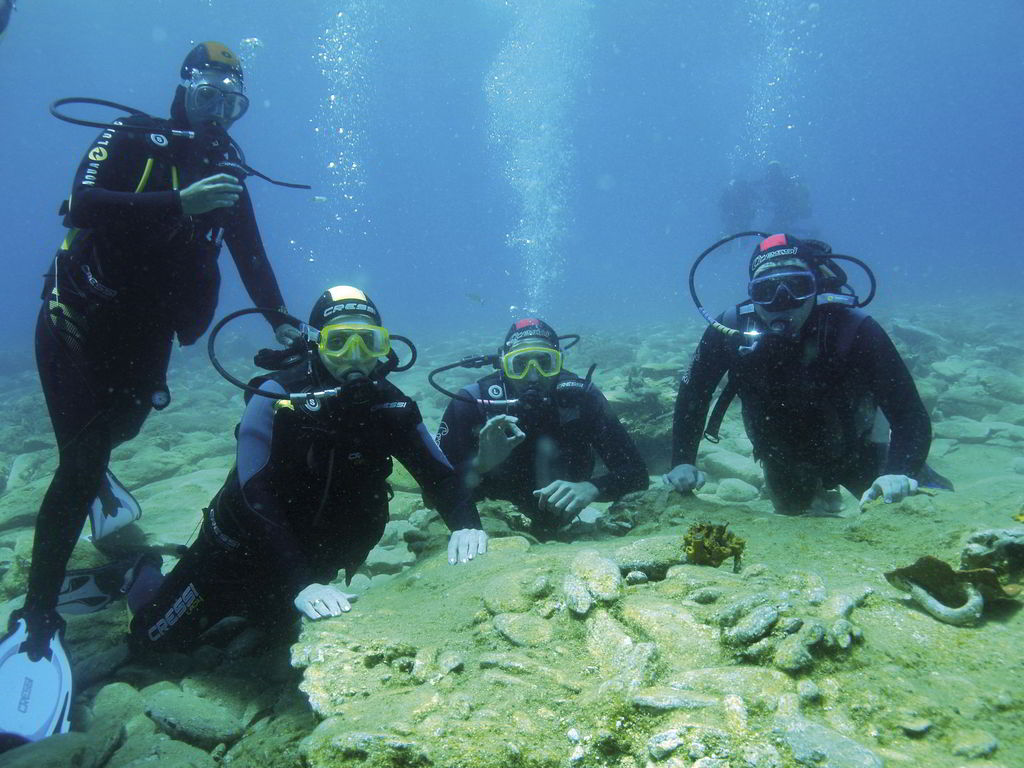The starting point of this route is the tourist resort of Hersónissos. Follow the old Ágios Nikólaos - Heráklion national road and head for the seaside settlement of Goúves, where you may swim and engage in sea sports at the local beaches. Don’t forget to visit the nearby “Thalassókosmos” (Sea World) in Goúrnes, one of the largest aquariums in Europe.
Following the Goúves - Kóxari provincial road, you will go through the Epáno Goúves and Skotinó settlements to visit the cavern of Agía Paraskeví, where tradition has it that the ancient Greek goddess Artemis was worshipped.
It is one of the most important worship caves in Crete, where you may enjoy the impressive stalagmite and stalactite formations. The route takes you south-east, past the settlements of Vóros and Harasó from where you may follow the Kaló Chorió - Galífa provincial road, through Galífa and on to Episkopí, a prominent agricultural centre in the area.
You absolutely must make a stop and visit the impressive byzantine churches with their unique frescoes and the Ethnological Museum of War in Argyrákion.
Episkopí offers itself for food and you shouldn’t forget to taste their succulent hand-made sausages. Moving further south-east, on the Episkopí - Moní Agkaráthou provincial road, you will come to the Sgourokefáli settlement. Make a stop and visit Moní Agkaráthou, one of the most remarkable monasteries in Crete with a longstanding scholarly tradition.
Next, take the Vóni - Kastélli provincial road and head for Thrapsanó, one of the most important centres of traditional pottery on the island, where you will have the opportunity to visit the villages’ pottery workshops and experience first-hand how ceramics are made, as well as acquire some clay vessels from the huge variety that they have to offer.
If you are true nature lovers, you may visit Liváda, the beautiful little lake that is by now a well-established destination for bird-watchers, especially in the moving seasons of migratory birds.
The course takes you to Kastamonítsa, where it is worth your while to make a stop and taste the succulent eftázymo bread, for which a festival is organised every August.
Move north-east and head for the Avdoú settlement, where you may visit the Agía Fotiní and Agía Ánna caverns, take a stroll in the settlement and see the byzantine churches.
For nature aficionados, there is the option to go on horseback riding or bicycle, while for the more adventurous who wish to admire the view from above, there is a paragliding and hand gliding launch.
If all this activity has made you hungry, you may find deliciously-cooked food at the village tavernas, while the beautiful traditional cafés offer themselves for relaxation.
Then you will move east and, after passing the village of Goniés, you take a left turn into the village of Mohós with the impressive central square and countless tavernas and traditional cafés -an ideal place to rest.
Continuing northbound, and before the route reaches the seaside settlement of Stalída, make a stop to gaze at the beach and marvel at the Cretan Sea. Stalída offers itself for swimming and other sea activities. You may also embark on a caïque and visit the islet of Día.
The route nears its end through the traditional settlement of Koutouloufári that is ideal for a romantic walk down its picturesque cobblestone alleyways.
If your heart desires to sample Cretan delicacies, all you have to do is pick one of the village’s many tavernas.
The route comes to an end back in Chersónissos, the well-organised northern beach tourist resort, where you may find tavernas, cafeterias, souvenir shops, accommodation, car and bike rentals, camping sites, etc.
If you are a golf lover, you may visit the Crete Golf Club with its 18-hole course for beginners and experienced players alike, while you may also go on horseback riding, go for a swim in one of the blue flag award-winning beaches, as well as take some time for wellness and relaxation at one of the local spas, etc.


